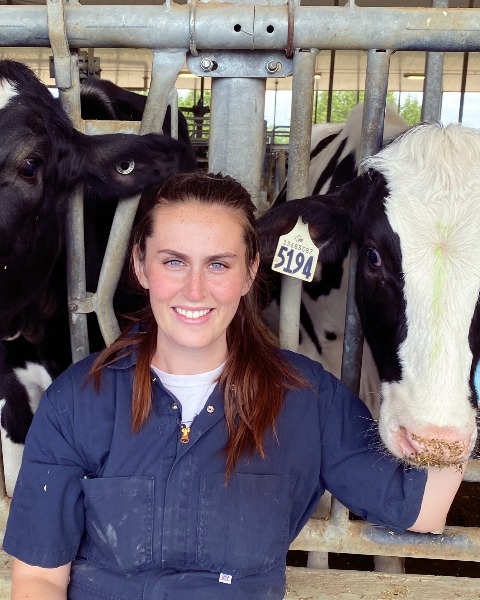Category: ANIMAL HEALTH
Poster Session X-B
PSX-B-23 - Immune tolerance of dairy heifers in response to repeated bacterial endotoxin exposure
Friday, July 16, 2021
5:00 PM – 6:00 PM EST
Location: Kentucky International Convention Center, Poster Hall/North Lobby

Tianna Sullivan, B.Sc
Master Student
Animal Biosciences, University of Guelph
Guelph, Ontario, Canada
Presenting Author(s)
Abstract: Lipopolysaccharide (LPS) endotoxin from the membrane of Gram-negative bacteria is often used to simulate bacterial infection in mammals. Repeated exposure to LPS over a short period of time, however, is reported to result in an attenuated acute-phase response. This “LPS tolerance” is an essential immune-homeostatic response that can protect against over-activation of the inflammatory response during chronic exposure to LPS. In the present study, Holstein calves (n=20) were initially intramuscularly challenged with either saline, or 100, 200 or 400 ng/kg of LPS and then all animals were re-challenged with 200 ng/kg of LPS 2-weeks later to assess potential LPS tolerance in ruminants. Serum was collected every 2 hrs for 6 hrs to profile changes in circulatory stress biomarkers. In comparison to the first challenge and saline control animals that received LPS for the first time, heifers re-challenged with LPS demonstrated significantly attenuated cortisol responses in the second LPS challenge (p < 0.05). Blood cell populations were also attenuated in animals receiving their second LPS challenge, in that re-challenged animals showed significantly less severe thrombocytopenic (p < 0.05), and leukopenic responses to their second LPS challenge as compared to their first (p < 0.05); this trend was also apparent when comparing newly LPS-challenged animals to the LPS re-challenged animals. MicroRNA expression profiles were determined to assess a potential epigenetic response to repeated LPS exposure, which may help identify therapeutic targets to protect against LPS-associated diseases including clinical mastitis and sepsis. The present study demonstrated that LPS tolerance occurs in dairy cattle, and understanding the roles of various miRNAs in the context of innate immune cell tolerance is essential for evaluating their impact on immune system homeostasis.

.jpg)
.jpg)
.jpg)
.jpg)
.png)
.png)